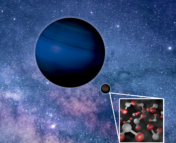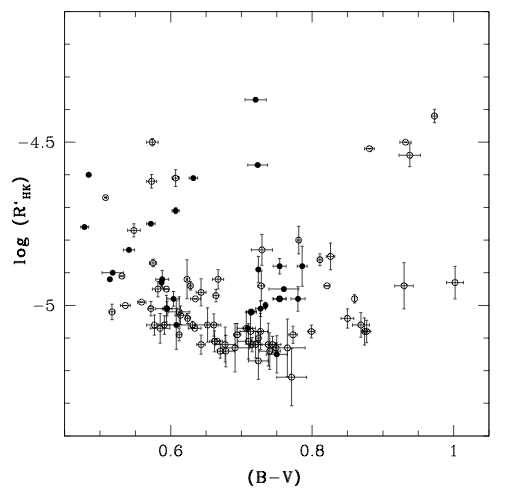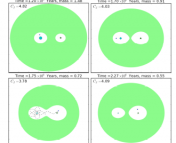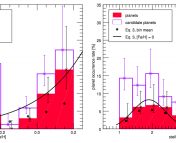Title: Chemical evidence for planetary ingestion in a quarter of Sun-like stars
Authors: Lorenzo Spina, Parth Sharma, Jorge Meléndez, Megan Bedell, Andrew R. Casey, Marı́lia Carlos, Elena Franciosini and Antonella Vallenari
First Author’s Institution: INAF – Osservatorio Astronomico di Padova, vicolo dell’Osservatorio 5, 35122, Padova, Italy
Status: published in Nature Astronomy [closed access]

Credit: NASA/ESA/G. Bacon
A complicated Relationship
Stars and their planets have an important and yet sometimes violent relationship. Planets, as far as we know, are born in protoplanetary disks of dust and gas around young stars. Once grown, they eke out an existence bound by the gravity of their stellar hosts, and bask in their light and energy. And yet, the vast majority of planets are also killed by the very stars that sustain them.
You have probably heard of stars swallowing their surrounding planets, engulfing them beneath their surface as they expand at the end of their lives.
However, there appears to be substantial evidence to suggest that stars quite frequently devour their planets even before their own life comes to a close!
Understanding Origin
The authors of today’s paper have found traces of unlucky digested planetary victims of binary systems by searching for differences in composition between the two stars in each binary pair.
Astrophysicists know for a fact that the stars in binary systems must have the same place and time of origin, and as a result they should not differ significantly in their chemical composition.
However, the authors show that in their sample of 107 binary star systems – all composed of two Sun-like stars with similar effective temperature and surface gravity – 33 pairs were found to be different in their iron abundance at a two sigma level.
The authors offer two possible explanations for this: previously unknown chemical inhomogeneities in protostellar clouds, or planet engulfment events that took place after the stars formed.
The former possibility would rock much of astrophysics, challenging the assumption that the current chemical makeup of stars depends on the environment of stellar origin – this underpins the field of galaxy studies. The latter, however, could shed some light on the possible evolutionary paths of planetary systems, especially those which are not as calm or as well-behaved as the circular orbits of our solar system.
Traces of Lost Planets
Planets within systems of multiple stars are known to experience a much more chaotic and dynamic life than the ones with a single host star. These planets have very diverse dynamical histories, which may even include destabilizing planetary orbits and the devouring of the rocky bodies by the star.
As a destabilized planet falls into a star, the planet breaks apart its material, such as iron, is assimilated into the star’s external layer. The amount of iron found in the feasting star should thus be higher than in its sibling of the same system.
Separating binary pairs by whether the two stars are chemically similar or different and plotting these two populations against their temperature (see Figure 1), it becomes evident that stars with higher effective temperatures are more likely to be divergent in their chemical makeup. The authors point out that this is to be expected, since cooler stars have thicker convecting zones, which are capable of diluting the assimilated amount of rocks more effectively than the thinner convective zones of hotter stars. Hence, hotter stars bear better detectable evidence for assimilated planets.

Conditioned on the dataset of the 107 binary star systems, the authors developed a model by an MCMC algorithm for the probability of finding chemically divergent stars in such systems, depending on their temperature. For the hottest stars (T=6500 K), the model yields a mean probability of finding mismatching pairs of PAnom=47% +/- 11%.
The authors assume the convective layers of these hot stars are thin, so that any amount of fallen in planetary material would be detectable and the pair of stars would become compositionally mismatched once at least one of the stars swallowed a planet. They then calculate the probability of planet engulfment events in Sun-like stars to be

Thus, the authors conclude Pengulf for their model to be 27% + 7% / – 8%.
Age is not just a Number
Besides iron, lithium can also indicate a planet having been devoured by its star. All stars were born with the same amount of lithium, but stars of the same size and age as our Sun have burned up almost all of it. Should the planet be incorporated into the external stellar layer after the star is old enough to have depleted most of its lithium, the element will be re-supplied in a significant manner by the engulfing event.
Figure 2 shows the severe difference in iron as well as lithium abundance for the chemically different pairs of the binary sample of this paper. The chemically similar stars (i.e. with similar abundances of iron) clearly have very close-matching lithium abundances, except for one outlier. There are also some pairs with significantly different iron abundances, but very similar detected amounts of lithium. This could be explained if a planet was swallowed while the star still had most of its lithium, so the amount of the element added by the planet was not significant.
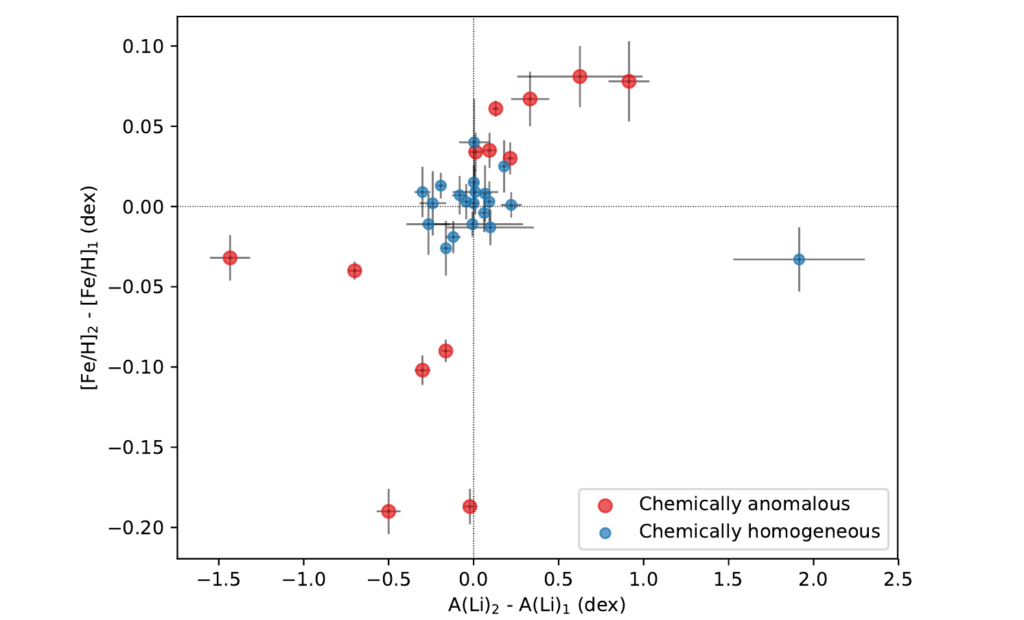
Source: Fig. 3 in today’s paper
Peace and Quiet
The research conducted by the authors is highly relevant for exoplanet research, since it carries the great advantage of only relying on measuring the chemical properties of stars correctly and not on exoplanet detection methods, which are often heavily biased towards certain types of planets.
It may also help in narrowing down where astrophysicists should look if they want to find an Earth-like planet. The Sun, when compared to other similar stars, appears to have a lower abundance in both heavy elements, such as iron, and lithium, indicating that it probably never engulfed any planets. Stars with similar chemical makeup could indicate a ‘calm’ planetary system architecture, where a planet may offer habitable conditions, in contrast to chaotic and highly dynamic systems, in which planets are frequently tossed about or even eaten by their host stars.
If we are to find a planet which is a twin to Earth, we will most likely find it in an inconspicuous and quiet system with no evidence of recent dramatic events.
However, the fact remains that while finding habitable planets is an exciting undertaking, observing systems in which these violent and severe events have taken place is probably just as interesting.
Astrobite edited by Sasha Warren
Image Credit: Today’s paper, NASA/ESA/G. Bacon

